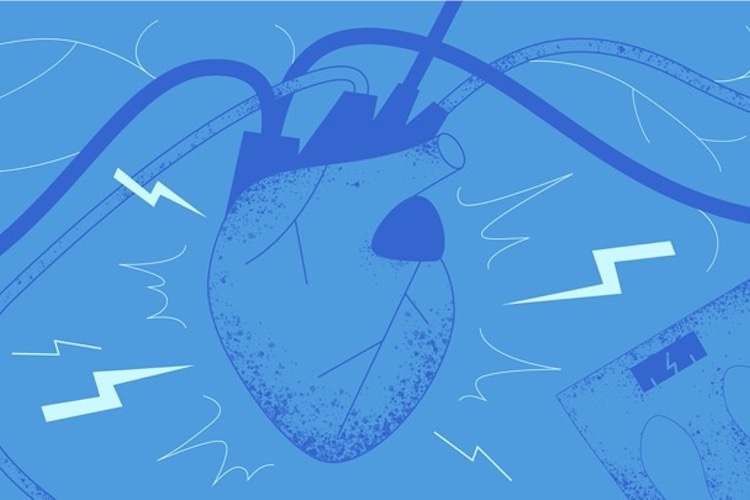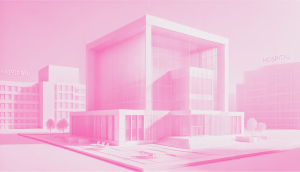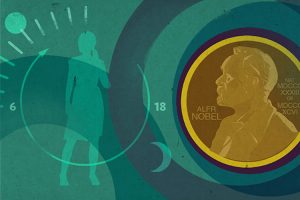Empirical Philosophy of Medicine
On the history of medical research in STS, Dutch hospitals, and Mol's work

A myocardial infarction is an infarct of the heart, an area of the heart muscle which has died because of inadequate blood supply through the coronary arteries, the blood vessels that feed the heart muscle. In most cases, a myocardial infarction is caused by a sudden occlusion of a branch of the coronary arteries at the site of an atherosclerotic plaque. Atherosclerosis develops in most subjects, males and females. It may start at a relatively young age and progresses gradually. Atherosclerotic plaques contain lipids, particularly cholesterol, and may be stable but may also suddenly rupture and occlude the artery. The myocardium behind the occlusion does not get any blood or oxygen. It is ischemic (lacks blood supply). After about 6 – 8 hours of occlusion, most or all tissue supplied by that artery is irrevocably damaged, necrotic, or dead. The term “myocardial infarction” was introduced more than 200 years ago.

Myocardial infarction occurs mostly (about 90%) in patients with extensive coronary artery disease and atherosclerosis in the coronary arteries. Atherosclerosis is often also present in other arteries in the body, such as the aorta, the arteries supplying the legs, or those that supply the brain. Occlusion of the latter causes a stroke. When a plaque ruptures, the content of the plaque comes in contact with the blood, and that causes the clotting of blood. That blood clot may close the artery and thereby cause an infarct. Plaque rupture may occur during physical or emotional stress, but in most patients, we do not know why plaque rupture occurs at a certain moment.
We know the disease process, atherosclerosis, but in most cases, we do not know the trigger that causes the infarct. People may live with that disease for many years without getting an infarct and then suddenly get it. Yet, it is possible to estimate the risk that someone will develop an infarct. This risk is higher in smokers at an older age; at middle age, it is higher in men than in women. The risk is higher in people with high blood pressure, those with diabetes, or with high cholesterol levels. We know a number of risk factors, and they together determine the risk.
Improvement of the risk factors delays the progression of atherosclerosis and reduces the risk of developing an infarct or stroke, particularly stopping smoking, a modest food intake with lots of fruit and vegetables, and treatment of diabetes, high blood pressure, and elevated cholesterol level.
Patients, who have had an infarct or have other signs of atherosclerosis, are at risk of developing another. Preventive measures such as those mentioned above are particularly effective in such patients: no smoking, regular exercise, prudent food habits, and drug therapy. This is often called “secondary prevention”.
Many persons who develop a myocardial infarction notice chest pain, which may be anywhere on the front of the chest or up to the jaws, in the left arm, or even the right arm or the upper abdominal area. It may be very severe, “an Oliphant sitting on my chest,” but also just an unpleasant feeling. These symptoms may wax and wean or persist for several hours. Patients may be short of breath when a large area of the heart is infarcted and the pump function of the heart is not adequate anymore. There may be arrhythmia, a slow or very fast, or an irregular heartbeat. Dizziness may develop with low blood pressure and fainting from that. Sudden death may occur when the heart stops pumping. So there is a large number of symptoms that may occur, but the most prominent is some type of unpleasant feeling on the chest. In part of the patients, few symptoms occur, and the infarct may be detected weeks or months later, or for example, on an electrocardiogram (ECG).
Unfortunately, arrhythmias caused by the infarct may lead to fainting and sudden death. In patients fainting from an infarct, immediate resuscitation, preferably with an Automatic External Defibrillator (AED), will be necessary and may be life-saving. Training lay people to administer resuscitation in case of cardiac arrest is very useful.
Infarction does occur suddenly, but many people already experience some symptoms days or weeks before the infarct. So they may have short periods in which the blood supply to the heart is diminished and experience unpleasant chest pain, which disappears. They may have it again a few days later. But the moment of the effect itself is sudden, so people have to call the emergency service in case of these symptoms. Indeed symptoms of a possible infarct require immediate action.
The consequences of an infarct depend on its location in the heart (anterior = front, inferior = underside, lateral) and its size, the amount of myocardial tissue that is necrotic. Sometimes the function of the heart valves may be affected, leading to heart failure. If the infarct is small and is treated adequately, people may not have any sequelae; they live just like they did before. If it is a large infarct, the patients have problems afterward. They have a reduced exercise capacity, so they cannot exercise or work anymore. They also may have shortness of breath and episodes of chest pain due to coronary artery disease. All those things require specific treatment.
Rapid diagnosis of an evolving myocardial infarction is crucial in order to timely initiate reperfusion therapy, as discussed below. Any delay should be avoided. Therefore people who experience symptoms that might be due to infarction, as mentioned above, should seek medical help immediately. Better safe than sorry. In patients with a suspected myocardial infarction, physical examination by a physician may be unremarkable. In other patients, abnormal heart sounds may be detected, or rales (signs of fluid in the lungs), an irregular pulse, or high or even low blood pressure. An electrocardiogram (ECG) will be made by the ambulance service, general practitioner, or the hospital emergency department. A typical sign of an infarct, elevation of the ST segment in the ECG, see picture, are diagnostic, and therapy should be started immediately. In some patients, however, the ECG is less remarkable. The diagnosis can then be made by the detection of substances in the blood that are released from the infarcted tissue, so-called biomarkers: troponin I or T or CK-MB. It may take a few hours before these biomarkers can be detected. Finally, an infarct can be recognized as an area with poor movement of the heart muscle on an echocardiogram or by another imaging method.
During the infarction, an artery occludes, so the proper treatment is to open the artery again. That can be done in two ways. The best treatment is immediate coronary angioplasty, usually with the placement of a stent. If this is not possible, the alternative is an infusion of a medication that dissolves clots, which is called thrombolysis. These therapies have bee developed in the 1970s-80s. Coronary angioplasty can be performed in specialized hospitals with facilities for cardiac catheterization. A catheter (a long tube) is introduced in an artery and passed through the arteries to the heart. A wire is pushed through the occluded vessel, and a balloon is passed over the wire to reopen the vessel. A tent is placed to keep the vessel open. If doctors do that properly and rapidly, the amount of damage is significantly reduced. If the artery is opened within the first half hour, the patient will not have an infarct, and the ischemic tissue may recover completely. If they do it too late, the infarct will already be completed the cells will be dead and cannot recover. The most important treatment is to try to open the artery as soon as possible.

In addition, treatment aims to reduce the symptoms, so the patient is given medication to reduce the pain and discomfort. Patients with a suspected infarct will be connected to a monitoring system. The electrocardiogram will be monitored for arrhythmia or other changes either by nurses looking at the screen or currently by a computer system. The occurrence of heart failure or recurrent angina (chest pain) will require additional measures. After an infarct, all patients should receive preventive therapy: aspirin to reduce the risk of blood clotting in the coronary arteries, cholesterol-lowering drugs to prevent the progression of atherosclerosis, and Beta-blockers as well as ACE inhibitors that reduce the risk of a new infarct. If it is a small infarct, a patient can have a complete recovery and no sequelae at all. If it is a large infarct, he or she may have major problems afterward.
There are different types of possible problems. If the heart has been damaged, it may not function well, and the patient will have reduced exercise capacity, shortness of breath, and heart failure. In addition, he or she may have problems from coronary artery disease itself, most frequently chest pain from exercise, while walking, when nervous or excited. So if there is additional narrowing in coronary arteries, treatment either by balloon angioplasty and a stent or by surgery is appropriate. Finally, patients may be at risk for sudden death and receive an Internal Cardiovertor-Defibrillator (ICD).

The disease is widespread. For example, in the Netherlands, which has a population of about 17 million, there are about 30 000 infarcts per year. In most Western countries, cardiovascular disease (heart disease and stroke) is a major cause of death, both in men and women. More women die from heart attacks than from breast cancer. People may not realize that we have made major advances. Thirty years ago, about 1 in 3 patients that had made it to the hospital with an infarct died, but nowadays, it is 1 in 30. So we made major advances, mainly because of the technology that opens the arteries and all kinds of medication which comes to it.
We try to identify more precisely the risk in people, to pinpoint the risk in time, because it does not really help so much if you tell people ‘you have a 5% risk of having an infarct per year”. If you could pinpoint it more precisely, for example, ‘you have a high risk of getting it in the next two months, ’ you might do something about it. The first results are promising, but we are not able to do that yet. This research on triggers is ongoing. And then, there are many developments in treatment after the infarct, for example, new, more powerful cholesterol-lowering drugs and better drugs to prevent the clotting of blood in the arteries.
In Holland, we developed a system that when a spouse or someone in the area calls for help because someone has a cardiac arrest, volunteers in the environment are informed immediately about the case. They come to pick up a defibrillator, go to the house of the affected person and try to resuscitate him. Life-saving indeed.
The main challenge is to make people aware of what is happening if an infarct occurs, to make them aware that they should call for help immediately when symptoms of a possible infarct or a stroke occur. Organizations to give prompt help by sending an ambulance properly equipped, including a defibrillator and an electrocardiograph, in order to diagnose the infarct and to bring people to the hospital as soon as possible. Nowadays, many ambulances also carry thrombolytic drugs to open the occluded artery, and this should be adopted worldwide.
Edited by Liana Khapaeva

On the history of medical research in STS, Dutch hospitals, and Mol's work

Psychoneuroimmunologist Daisy Fancourt on the effect arts have on our well-being, the correlation between read...

Pathobiologist Juergen Richt explains the significance of the studies for which the 2015 Nobel Prize in Physio...